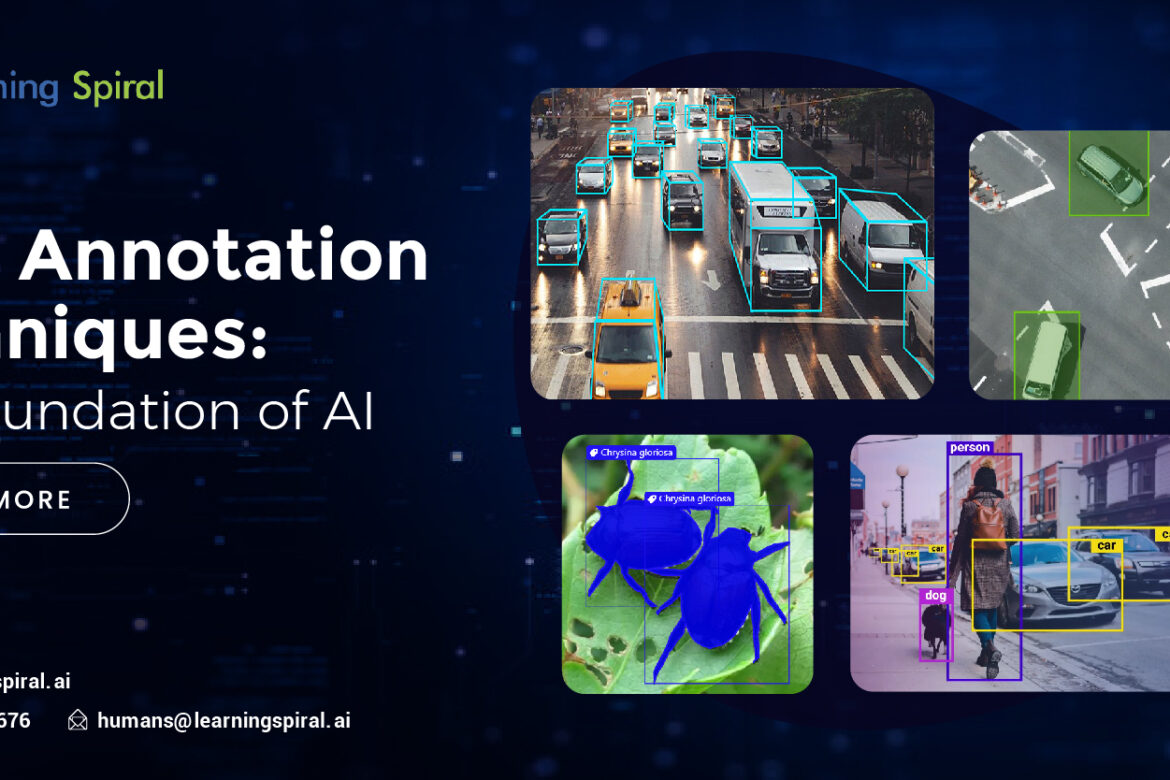Data annotation, the process of labeling raw data to make it understandable for machines, is a critical step in developing artificial intelligence (AI) models.
It involves assigning meaningful tags or labels to data points, enabling algorithms to recognize patterns, make predictions, and perform specific tasks.
This article explores various data annotation techniques used in different AI applications.

Image Annotation
Image annotation involves labeling objects, regions, or features within images. This technique is fundamental for computer vision tasks such as object detection, image segmentation, and image classification.
- Bounding Box Annotation: This technique involves drawing rectangular boxes around objects of interest within an image. It’s commonly used for object detection tasks.
- Polygon Annotation: More precise than bounding boxes, polygon annotation outlines the exact shape of an object. It’s particularly useful for irregular-shaped objects.
- Image Segmentation: This technique involves labeling every pixel in an image with a specific category, creating a detailed map of the image.
- Landmark Annotation: This method involves identifying and labeling specific points on an object, such as facial keypoints for facial recognition or body key points for pose estimation.
Text Annotation
Text annotation focuses on labeling textual data for natural language processing (NLP) tasks. Common techniques include:
- Named Entity Recognition (NER): Identifying and classifying named entities within text, such as people, organizations, locations, and dates.
- Sentiment Analysis: Labeling text with its sentiment (positive, negative, neutral).
- Text Classification: Assigning text to predefined categories or labels.
- Intent Recognition: Identifying the user’s intent behind a given text query.
Video Annotation
Video annotation involves labeling objects, events, or actions within video sequences. It’s crucial for applications like video surveillance, autonomous vehicles, and video content analysis.
- Object Tracking: Identifying and tracking objects across multiple video frames.
- Action Recognition: Labeling actions performed by objects within a video.
- Event Detection: Identifying specific events or occurrences in a video sequence.
Audio Annotation
Audio annotation focuses on labeling audio data for tasks like speech recognition, speaker identification, and audio classification.
- Speech-to-Text Transcription: Converting spoken words into text format.
- Speaker Diarization: Identifying and labeling different speakers within an audio recording.
- Audio Event Detection: Identifying specific audio events like doorbells, sirens, or animal sounds.
Other Annotation Techniques
Beyond these core techniques, there are specialized methods for specific applications:
- 3D Object Annotation: Labeling objects in 3D space, commonly used in autonomous driving and augmented reality.
- LiDAR Annotation: Labeling points from LiDAR sensors for object detection and scene understanding.
- Data Augmentation: Creating new training data by applying transformations to existing data, such as rotations, flips, and scaling.
Conclusion
Data annotation is a meticulous process that requires human expertise. While automation tools can assist in some tasks, human judgment remains essential for ensuring data quality and accuracy.
As AI continues to advance, the demand for high-quality annotated data will only grow, making data annotation a critical component of the AI development pipeline.




